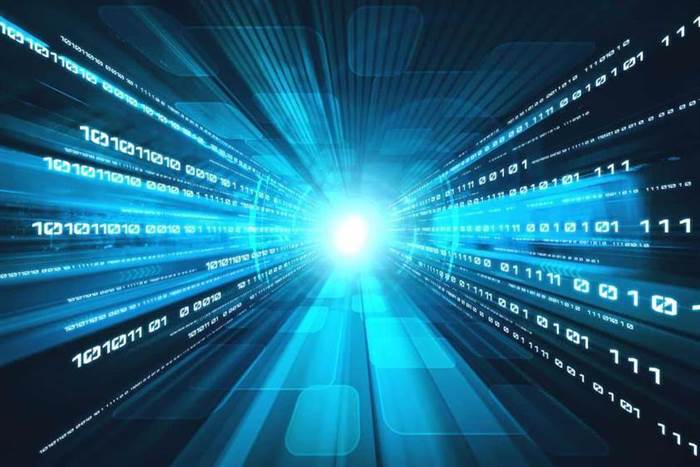Both velocity and security at fog nodes are other potential issues that demand attention. The location of the intelligence and computing capability is the primary distinction between fog and edge computing, based on the OpenFog Collaboration, which Cisco founded. Data is distributed from endpoints to a fog gateway in a purely foggy surroundings, where it is despatched to sources for processing before being sent again to the fog gateway and intelligence is at the native space network (LAN). Yet any gadget with storage, processing power, and community entry might likewise operate as a fog node. These nodes are positioned in various strategic places when there is a big and spread community to provide local analysis and entry to essential data.

For some functions, data may need to be processed as quickly as attainable – for instance, in a producing use case where related machines need to have the ability to respond to an incident as soon as attainable. Fog computing is the concept of a distributed community that connects these two environments. In a conventional cloud-based setup, customers immediately entry services from the cloud. This is why all cloud vendors include their very own access management system, which can be utilized with third-party identity and entry management (IAM) solutions. With fog computing, the fog layers act as a intermediary between the person and the cloud. This implies that the fog engine must know who’s requesting the service, and the identical authorization process and policies hold good here.
Useful Resource Manager
For example, connected vehicles generate a significant quantity of knowledge that needs to be analyzed in real-time to allow options such as autonomous driving. Fog computing is a time period for technology that extends cloud computing and services to the edge of an enterprise’s network. It allows data, functions, and different resources to be moved closer to, or even on prime of, finish users. Smart transportation networks are one other example of a fog computing utility. Each connected vehicle, site visitors system, and even road on this type of grid generates a stream of information. Obviously this implies an incredible quantity of knowledge analysis in real-time is important to keep away from accidents, and a fog computing approach is crucial to sharing the restricted cell bandwidth that’s out there.

Fog computing encapsulates not just that edge processing, but in addition the community connections wanted to convey that data from the sting to its finish level. Fog computing is a computing structure by which a sequence of nodes receives information from IoT gadgets in real time. These nodes carry out real-time processing of the information that they receive, with millisecond response time.
Extra On How Fog Computing Works
The capability to conduct knowledge analysis in real-time means faster alerts and less hazard for customers and time misplaced. Although fog computing is a comparatively recent addition to the cloud computing paradigm, it has gained substantial traction and is well-positioned for growth. The Fog World Congress is highlighting this development by highlighting this growing expertise.
- It can be utilized in scenarios where there is not a bandwidth connection to send information, so it must be processed near the place it is created.
- In contrast to Mist, where intelligence is elective, Fog brings intelligence right down to the underside of the cloud structure.
- The installation of a dispersed collection of heterogeneous fog units introduces extra compatibility and maintenance points.
- Big media libraries work finest with rotating disks, while native flash chips are perfect for security keys, log files, and tables.
Such a vehicle might, for instance, function as an edge device and use its personal computing capabilities to relay real-time data to the system that ingests site visitors data from other sources. The underlying computing platform can then use this data to operate site visitors alerts more effectively. By moving real time analytics into a cloud computing fog situated nearer to devices, it’s easier to capitalize on the existing computing energy present in those devices.
Setting up a decentralized set of heterogeneous fog units throws up new challenges by way of upkeep and compatibility. Other industries that use fog computing include retail, oil & gasoline, authorities & navy, and hospitality. Personal assistants similar to Siri and Alexa are available throughout units and are suitable with most, corresponding to smartwatches. This flexibility and presence imply that we will count on fog computing to turn into a crucial a half of varied industry verticals. Any enterprise that offers real-time options might need to incorporate fog computing into its present cloud infrastructure.
Processing this data domestically, in a single wi-fi real world mannequin allowed for a 98% discount in packets of information transmitted, whereas maintaining a 97% knowledge accuracy, in a distributed knowledge fog computing mannequin. In addition, the vitality financial savings are excellent for effective power consumption, an important feature within the setting of battery powered units. Fog computing is defined https://www.globalcloudteam.com/ as a decentralized infrastructure that places storage and processing elements at the edge of the cloud, the place information sources similar to software users and sensors exist. This article explains fog computing, its parts, and best practices for 2022 in detail. Fog computing is a form of distributed computing that brings computation and data storage nearer to the network edge, where many IoT devices are positioned.
Fog Computing And 5g
Before beginning at Network World in January 2012, he labored for a day by day newspaper in Massachusetts and the Worcester Business Journal, the place he was a senior reporter and editor of MetroWest 495 Biz. Fog computing is the nascent stages of being rolled out in formal deployments, but there are a variety of use circumstances which have been identified as potential best situations for fog computing. The healthcare industry is doubtless considered one of the most governed industries, with rules similar to HIPAA being necessary for hospitals and healthcare suppliers. This sector is all the time trying to innovate and tackle emergencies in real-time, corresponding to a drop in vitals.
Finding the correct of hardware and software program to go with every sensor is crucial. While it might be tempting to over-engineer and add sophisticated gadgets on the fog stage, the aim is to ensure minimum hardware and software footprint. Anything extra will result in an costly middle-level computation that can become a security liability. The position of each sensor and the corresponding fog node should be fastidiously thought-about. The lifecycle of each fog part could be automated to be dealt with from the central console.

Data storage is another essential distinction between cloud computing and fog computing. In fog computing much less data calls for instant cloud storage, so users can as a substitute subject data to strategic compilation and distribution rules designed to boost efficiency and scale back prices. Ginny Nichols, a product line supervisor for Cisco, first used the phrase « fog computing » in 2014. This computing method is named « fog » since it concentrates on the sting of the network. With the recognition of fog computing, IBM created the term edge computing to describe a associated computing approach. Fog computing has purposes within the Internet of Things (IoT), including the next-generation smarter transportation community (V2V within the US and the Car-To-Car Consortium in Europe).
Fog Computing is the time period coined by Cisco that refers to extending cloud computing to an fringe of the enterprise’s community. It facilitates the operation of computing, storage, and networking companies between finish devices and computing information facilities. The cloud permits users to entry solutions for computing, connectivity, and storage cost-effectively and simply, however it’s a centralized useful resource.
The cloud offers the prolonged computing sources wanted for storing the huge quantity of knowledge that edge units produce however do not use. It also supplies extra computing assets for further evaluation, which makes the cloud a complementary ecosystem for fog computing purposes. For every new technological idea, requirements are created and so they exist to supply customers with regulations or instructions when making use of those ideas. In the case of the edge and fog computing, whereas edge computing refers to bringing compute closer to information sources, fog computing is a regular that defines its operation and application in numerous eventualities.
Fog computing is especially important to gadgets related to the web of issues (IoT). Any gadget having processing storage and network connectivity is normally a fog node in fog computing and placed on a railroad monitor or a gas station. Using solely fog vs cloud computing microcontrollers and microchips, Mist computing is lightweight computing in the community internet. In distinction to Mist, the place intelligence is optionally available, Fog brings intelligence all the method down to the underside of the cloud architecture.
Fog Computing Vs Edge Computing
It must be noted, nevertheless, that some network engineers think about fog computing to be merely a Cisco model for one strategy to edge computing. There had been few customers on the planet, and they needed to reserve time on a pc (and show up in person) to have their punchcards processed. Systems referred to as mainframes made many inventions and enabled time-shared tasks on terminals (like desktop computers, however with out their own CPU). From manufacturing methods that need to have the ability to react to occasions as they happen, to financial institutions that use real-time data to inform buying and selling choices or monitor for fraud. Fog computing deployments might help facilitate the transfer of data between the place its created and a big selection of locations where it must go. This is finished by exposing a uniform and programmable interface to the other components in the system.
Fog computing brings the advantages and power of the cloud closer to where knowledge is produced and used. Since each entail transferring processing and intelligence closer to the place the info is produced, the words fog computing and edge computing are generally used interchangeably. Although fog computing could be carried out for security and regulatory concerns, this is frequently carried out to extend efficiency. Fog computing has also been applied in manufacturing in the IIoT (Industrial Internet of Things). This allows related manufacturing units with sensors and cameras to assemble and process data regionally, rather than send all of this data to the cloud.

